"Creativity often consists of merely turning up what is already there. Did you know that right and left shoes were thought up only a little more than a century ago?" -Bernice Fitz-Gibbon
Yes, I have a Ph.D. in Astrophysics. Yes, I've spent years as a professional scientist, an award-winning physics teacher and professor, and a professional science communicator. And earlier this month, I learned that all of that hasn't kept me from tying my shoes incorrectly for the past 29 years. Not only that, but if you put as little thought into tying your shoes as I did, you've got a 50-50 shot of tying them wrong yourself! Widespread Panic has their own advice about how you gotta
Now, as we all know, the first step is the old "criss-cross and tuck" of the shoelaces, where you cross the laces together, tucking one under the other, and pull them tight.
We don't often think about it, but -- maybe it's because I'm left-handed -- I always cross the left lace over the right lace before tucking it under and pulling. I could've just as easily crossed the right lace over the left, and that would be just as good; either way could give me a nicely tied shoe.
Or a very poorly tied shoe, as we'll see in a minute. Either way, this leaves you with one lace on either side of the shoes. The next step is to make a loop with one of those sides.
Again, maybe it's the left-handed thing, but I always made the loop with my right hand, leaving the left hand free for what comes next. Of course, you can make a loop with either the right lace or the left lace, and either way you'll end up with tied shoes.
It shouldn't make a difference, right? Well, that all depends on what you do next. Because the next step is to wrap the unlooped lace around the loop, before pulling it through the new loop you just created. But -- for the third time -- you've got two choices here.
You can wrap the shoelace underneath the loop and then up and around back towards you, before pulling it through, which will tie your shoe. But you could've also gone the other way.
You could have wrapped the shoelace over the loop, and then down and around back towards you, before pulling it through and completing the tie.
This is what I've been doing my entire shoe-tying life. And, much like this unsuspecting fashion blogger, my shoes have looked like this.
Tied, sure, but with these weak, skewed bowties that -- for some reason -- either come undone after a few hours of standard walking, or wind up in some heinous, difficult-to-undo mess of a knot. In addition to not being a very good knot, my shoes never looked nice and neat like some people's. I'm talking about knots like this.
Knots that are square to the laces. Knots where the tied bow runs parallel to the criss-crossed-and-tucked laces that they sit upon. Knots that self-tighten as you walk, and that always come out when you want them to with just a pull of either loose lace. Going in for a closer look, here's what a nicely tied shoelace bow looks like.
How hard could it be to make a knot like that? And why don't my laces look like this?
It turns out that what's going on, in terms of the two sides, is the difference between a Reef Knot and a Granny Knot. And all I had to do, all these years, was switch any one of the steps I took, and I would have been tying my shoes in nice, well-tied Reef Knots instead of these lousy, impossible-to-stay-tied Granny Knots!
I went and put together an infographic to help you follow along and get the good (Reef) knots out of your shoes. Have a look!
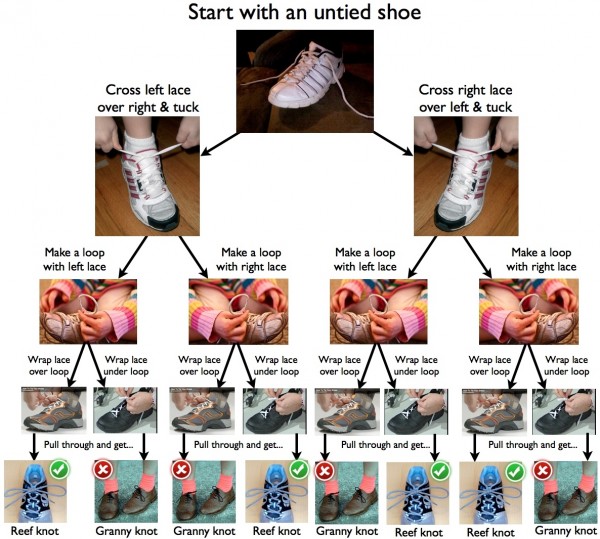
You can see what I've been doing: left over right for step 1, loop with the right lace for step 2, and wrapping the lace over the loop for step 3, giving me the dreaded Granny Knot in my shoes. And I never even knew!
As soon as I learned of this, I tried tying my shoes in a Reef Knot, and the difference was immediately noticeable. Not only did my shoes look different, with the laces neatly aligned, but my shoes wore differently as I walked throughout the day. The knot didn't loosen or unravel over the course of the day, and no double-knotting was necessary to keep it tied! My biggest peeve about the whole ordeal? How did I make it until my 30s before I found out about this?
But it wasn't until I stumbled across this video that I even considered I'd been tying my shoes improperly.
So don't let your kids (or yourselves) suffer through another day of poorly tied shoes! Yes, you'll feel like a fool, taking an extra 10 seconds to tie them as your fingers fumble with one of the seven-out-of-eight ways you're unaccustomed to tying them, but the payoff is worth it!
Hope this helps at least a few of you, and hope you have a great one this weekend!

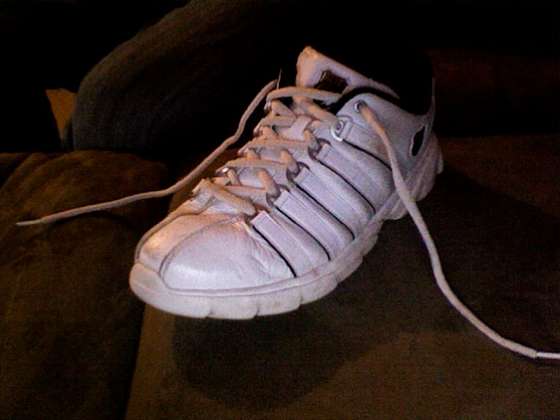
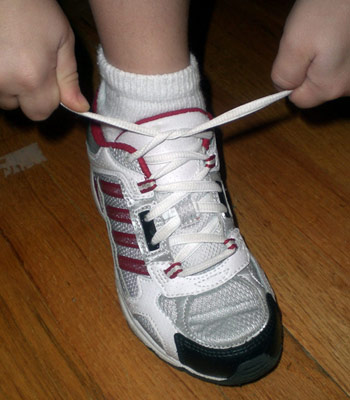
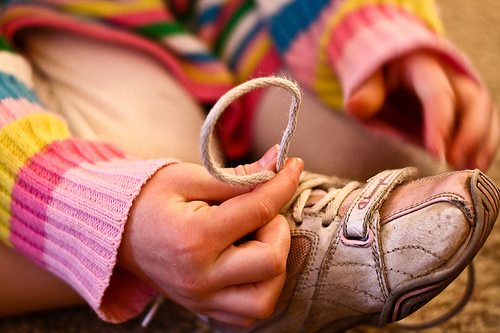
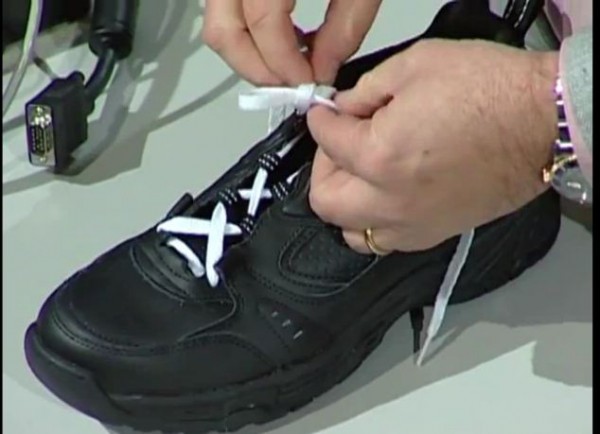
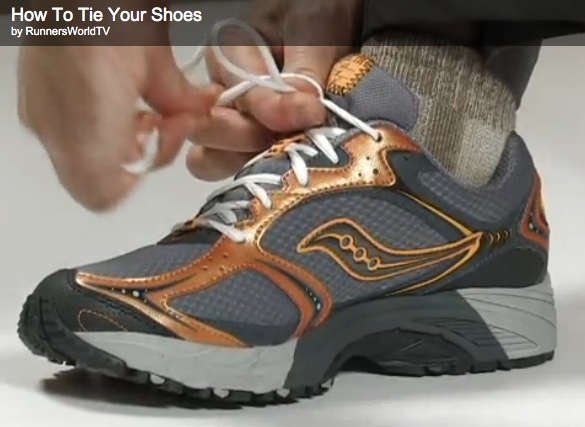
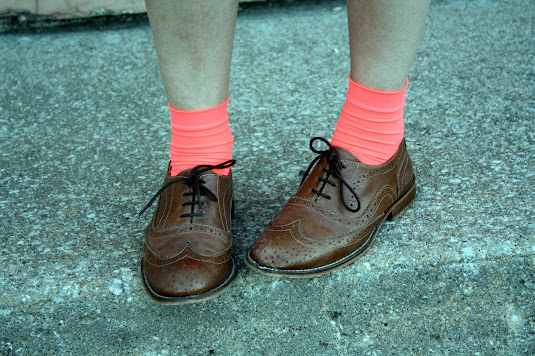
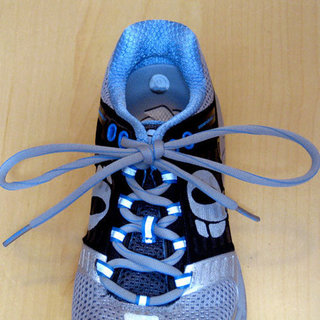

And the super-quick method: http://www.youtube.com/watch?v=gbaHxsilsKI&
OMG! No wonder!
Left over right and under.
Right over left and under.
Might be of interest: animatedknots.com
I use this thing for learning all my climbing knots. It helps the motivation to get it right when wrong is not annoyance but death.
Leftie (and landlubber) here also... all these years I've been 'fixing' the problem by tying another knot with the bows...
So I understand most of what you write about astronomy, physics, and the like, but this just baffles me. For the life of me, I can't figure out the difference on how to tie my shoes, and I often end up with, apparently, one of each knot on each different shoe.
Thanks, Ethan, but perhaps when I'm in a more open minded mood I'll try this again. For now, I'll stick to the astrophysics
It is a basic, but very important, difference between a reef and granny knot. Base your knot on a reef knot and you're good. Good enough for every day use.
If you want extra security put an one extra turn on each of the two layers of the reef knot. Tuck the string one more time (forming a double overhand) and then tuck the loop one more time and the knot is much more secure while it can still be quickly and easily released in the usual way.
Climbing or working up high, places where a loose shoelace can risk injury, an extra tuck each way locks the knot when pulled tight. It helps keep me safe.
And I never learned how to tie my shoes so they didn't come loose until halfway through my hang gliding career. For some reason, having loose shoelaces as you're trying to launch yourself in a kite by running down the side of a mountain is seen as a safety issue.
Left over right and tuck. Make a loop with your left hand, hold the loop with your left thumb and forefinger, wrap the right lace twice around your thumb (up on the front side, down on the back side), then use your left index finger to poke the right lace through the hole where your thumb was as you withdraw your thumb.
You get all the security of a childhood double-knot, but you can grab an end and pull and it comes undone like the classic square-knot shoelace.
By the way, this technique creates the knot that your blue example shoe has (note the two perpendicular loops in the middle). The flow chart that ends up in a reef know actually gives you a knot with a crossing perpendicular loop in the knot.
/frank
Ha! Yes, I discovered this a couple of years ago... It really does make a difference.
Huh...based on how mine come out, I think I've been doing it "wrong" also. I'm as strongly right-handed as you are left-handed, which might explain it. I will try this next time! (Perhaps before even leaving work, when my laces have come loose in spite of double-knotting.)
I am a leftie, and totally tied my shoes the exact way you did. What a nice improvement.
Apparently I made it to my 40s getting it wrong. I've also had to resort to the double knot method to keep my laces done up. Just retied my laces one of the other correct ways (#6 on that decision tree), and we'll see how well it lasts the day without the customary additional knot.
My daughter learned to tie hers completely differently. She does the first knot, then makes loops out of both laces and ties those loops into a knot. The result is exactly the same, although I'll have to double check if it's the same reef or granny knot.
Don't feel bad. This reef knot/granny knot parallel didn't occur to me until I was about 40.
And remember, knot theory has its own branch in mathematics. Pretty heady stuff....
http://www.ams.org/staff/jackson/fea-nelson.pdf
A kids cartoon in the 80's was "King Rollo" about a king called Rollo. One adventure he had for one episode was to tie his own shoelaces.
Jason, perhaps with sufficient observation, they'll collapse into a single knot vector?
Actually, the pic of the blue running shoes, which you're using to demonstrate a properly tied bow, is actually a different knot, sometimes called a "shoemaker's knot" (although I originally came across it as the "turquoise turtle" - http://www.fieggen.com/shoelace/turquoiseturtleknot.htm ).
My dad was an avid sailor, so I was learning knots since I was 5 or 6.
Gee...this subject never came up while I was playing with kinetic theory of gases, quantum mechanics, and such playful stuff. Unlike you, I am right-handed; but, I tie my shoes precisely as you have (in the past) tied yours.
The things our physics professors failed to teach us! Thanks, Ethan. I'll give it a shot the next time I tie my sneakers.
I'm another member of the Sinistral Minority. I just wear slip ons. No laces to tie. (-:
I bought a book about creative ways to tie your shoelaces for my young sister-in-law as a Christmas present a few years back, and read a few pages before I wrapped it. This very topic was the first entry. I'd been doing it wrong. It was a giant pain for the first few days, retraining myself. My fingers just did not want to make the first cross in the other direction. But after about a week, it became just as automatic as the wrong way was. I occasionally think about that while tying my shoes, and every time I do, I go back to fumbling, and I'm never quite sure if I'm doing it right.
It's an interesting book for younger kids, if anyone is interested. http://www.amazon.com/Laces-100s-Ways-Pimp-Kicks/dp/B0071VWQHQ/ref=sr_1…
I learnt this as a (Boy) Scout in my early teens, confirmed it rock-climbing and sub-aqua diving in my late teens and my twenties, reinforced the knowledge tree climbing in my thirties and do it on my shoes still. Now I have to tie shoes for pre-school children in my work. Some shoes, especially (it seems) Nike ones which have artificial fibre laces, despite my best efforts (and those of my work colleagues), consistently come undone and need retying two or three times every morning. I should use a sheetbend I know but it's harder to put loops in a sheetbend and three-year-olds won't always hold still for long enough.
Check out this site http://www.fieggen.com/shoelace/index.htm for all kinds of different ways to tie your shoe laces
Wow. 23 comments on tying shoes! Makes a sailor happy. I found this site after reading about travel.
Chili Pepper beat me to it. Highly recommend Ians Shoelace site.
My favorite: http://www.fieggen.com/shoelace/secureknot.htm
Easy to tie, doesn't come undone when you don't want to. Easy to untie when you do want to.
Ironically, the point of using a reef knot is so that it can be undone relatively easily compared with a granny knot after it has been put under a load. This is done by grasping both sides and pushing towards each other. On the other hand a granny knot 'locks up' after being loaded and is a menace to undo.
"Some shoes, especially (it seems) Nike ones which have artificial fibre laces, despite my best efforts (and those of my work colleagues), consistently come undone and need retying two or three times every morning."
It is DEFINITELY the artifical fibres.
The shoelace tie is basically a slip Reef knot. A reef knot only holds through stiction with the other parts of the rope/lace in the knot.
Hempen rope (or horsehair, or almost every other natural fibre) have a lot of "fur" that means that the reef knot holds fast.
Artifical fibres are more self-contained and slicker. Therefore there is no grip. Therefore the reef knot is the one knot that should NEVER be used to fasten them.
Which has me wondering why, for the sake of 5p savings per lace, they use artificial fibres for SHOELACES which can only be tied with a reef knot.
Razor blade model? The shops selling shoes sell shoelaces for £1.50. The marginal cost on the shoes themselves would neuter almost all of that profit.
I'm 35. I'm a doctor. I too have a string of letters after my name. And yet I need to thank you for rescuing me from the torment of a life of poorly tied shoes inadequately salvaged by a cumbersome double knot. I mean I love the astrophysics stuff of course, that's why I'm here, but this shoe related enlightenment has overwhelmed me with its practical, life changing simplicity.
Who knew?
A friend posted this link on Facebook, and as it just so happened, I posted a status update that I'd taught my daughter how to tie her shoes! She's so excited.
I read your post and was RELIEVED to discover that I've been doing it right all these years. Whew!
Who knew I could tie a Reef Knot?
Cool.
Thanks for the post!
Clearly this is a parity problem. There are two correct versions of the knot, which are mirror images ... since there are left and right shoes, shouldn't you use one version on each?? Which on which, do you suppose???
The issue also applies to tying a martial arts belt, which beginners get wrong more than half the time for some reason. If the ends come off the knot up-and-down, you're backwards.
I notice that like with the blue shoe you aren't using the double eyelets at the top; there's a fancy locking knot that goes there that Real Runners know (not me). That kinda brings up a whole other discussion, which is how to lace the shoe. The classy shoes (like the blue one) have loops such that the lace never goes under the sides of the shoe, directly over the tongue. If the laces bear on the tongue, they will constrict the top of the foot, where the tendons are exposed. Bad! My Dad had a way of running the laces vertically on the underside, then straight horizontally across; instead of X's you get a ladder. It's very tedious to do but it won't come loose even when you want it to, eg to take the shoe off. My Dad said he learned it from a wrestler who thought it was very important, the X method would damage your feet.
Huh! Turns out I've been doing reef knots correctly since childhood BUT never known why. Thank's for the clarification :-)
I generally tie them the "improper" way with the granny knots to start with - and then tie the hanging loops together again a couple of times at least to keep them in place.
An acquaintance of mine once said, "a granny knot is just a square knot that failed."
I had no idea people were tying their shoes the wrong way. I thought this was well-known tribal knowledge. FWIW, I couldn't tie my own shoes until I was seven. One day I just figured it out, but I figured it out correctly, and the square knot and I have been good friends ever since.
Maybe for your next trick you can learn to wear pants. ;-)
[The only time I saw Ethan was in a recorded news segment where he gave an interview while wearing a kilt.]
"then straight horizontally across; instead of X's you get a ladder"
It's common in the military (at least in the UK, I would expect elsewhere). Such a lacing allows bootlaces to be cut more easily.
When you've just been given a DSO (I shall not expand the version I mean into words since the acronym is rather naughty) from a landmine, getting the boots off quickly and cleanly is rather important. Crossed laces mean you have to cut twice as many laces, with a good chance on each of snagging the laces and further traumatising the limb.
*crosses right over left instead, ties rest normally* WTF!
I just want to say that this post has revolutionized my shoe-tying.
That is all.
I decided as a kid that tying shoes was a waste of time. I used to wear Velcro shoes, now I prefer slip-ons.